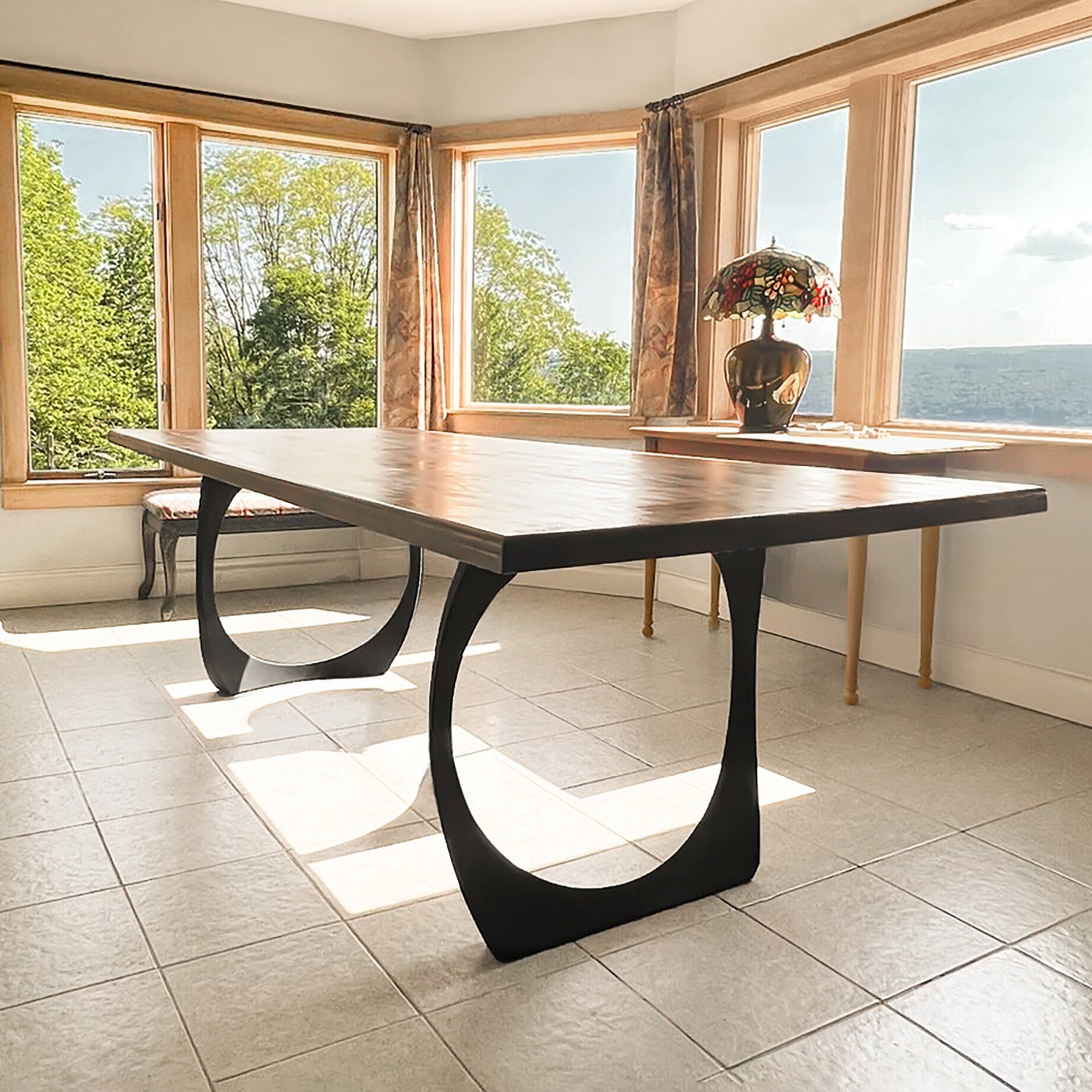Leading Patterns in Dining Room Table Legs to Raise Your Dining Area
Leading Patterns in Dining Room Table Legs to Raise Your Dining Area
Blog Article
A Comprehensive Look at Eating Table Leg Styles: Finding the Perfect Match
Choosing the ideal eating table leg style is essential for both aesthetic appeal and sensible capability. For those with bigger tables, trestle legs make certain sturdy assistance, whereas barrette legs present a mid-century modern vibe with their minimal style. The x-shaped legs blend contemporary style with improved stability.
Typical 4 Legs
Among the different types of eating table leg designs, the conventional four-leg layout continues to be an ageless choice for lots of homes. Four legs offer balanced support, ensuring the table stays secure and capable of bearing substantial weight (dining room table legs).
From a visual viewpoint, the traditional four-leg design can be quickly adapted to numerous interior designs. Whether crafted from wood, steel, or a mix of materials, these legs can be intricately carved, smooth and minimalistic, or anything in between. Their adaptability enables them to enhance both rustic and modern settings flawlessly.
Furthermore, the simple framework of the four-leg layout helps with convenience of movement and placement within a space. Unlike more complex bases, this design minimizes blockages, providing ample legroom for diners. In recap, the traditional four-leg table leg design marries withstanding beauty with functional functionality, making it a sharp selection for those looking for both kind and function in their eating furniture.
Stand Base
Commonly celebrated for its classy and space-efficient style, the stand base is a notable alternative to the conventional four-leg arrangement in eating table leg styles. This distinctive base usually includes a single main column supporting the table top, which can differ in type, from ornately carved timber to smooth, contemporary steel. Among the primary advantages of the stand base is its ability to optimize legroom and seating flexibility. Without corner legs, diners are managed better liberty of motion, making it a perfect selection for round and oval tables that advertise more intimate and comprehensive events.
The central column itself offers a canvas for intricate layouts and artistic expressions, including a component of visual passion below the table. In summary, the stand base combines performance with style, making it a fine-tuned and practical choice for diverse dining settings.
Trestle Legs
Trestle legs offer a durable and timeless foundation for dining tables, identified by their straight cross-bracing and sturdy assistance beams. Originating from middle ages times, this style has evolved yet retained its vital framework, making it a seasonal fave in both standard and contemporary settings. The central trestle beam of light, frequently supported by two or more upright posts, supplies exceptional security, enabling for larger table lengths without the requirement for extra legs.
A considerable benefit of trestle leg tables is the adequate legroom they provide. Unlike tables with sites four corner legs, the lack of blockages at the table's sides supplies unimpeded space for chairs and restaurants, enhancing convenience and accessibility. This makes trestle tables optimal for fitting larger celebrations, whether in a dining area or a banquet hall.
From rustic farmhouse to streamlined contemporary designs, trestle legs can be tailored to fit specific preferences. Their enduring charm and useful advantages make trestle legs a compelling selection for those seeking both style and functionality in their dining table.
Hairpin Legs

The appeal of barrette legs depends on their simpleness and versatility - dining room table legs. Offered in an array of materials, more information including steel and brass, they can be finished in countless colors to complement different indoor styles. Whether coupled with a rustic wooden tabletop or a modern glass surface, barrette legs easily mix functionality with a touch of classic beauty
Durability is an additional remarkable feature of hairpin legs. Despite their fragile appearance, these legs are crafted to bear considerable weight, ensuring the eating table remains steady and safe. In addition, they are fairly simple to mount, making them a prominent option for do it yourself enthusiasts and specialist furniture manufacturers alike.
X-Shaped Legs

Constructed from products such as steel, timber, or a mix of both, X-shaped legs can be customized to match numerous style preferences. Steel legs often offer a smooth and industrial feel, suitable for loft-style homes and modern-day eating areas. On the other hand, wood X-shaped legs offer a warmer, much more rustic allure, appropriate for farmhouse or eclectic interiors. The versatility in products permits property owners to customize their dining tables to much better fit their overall design plan.
Additionally, the design behind X-shaped legs ensures also weight circulation, decreasing the danger of wobbling and improving durability. This makes them specifically fit for bigger table that call for additional support. In essence, X-shaped legs blend functional design with modern-day appearances, making them a classic option for varied eating environments.
Final Thought
An extensive understanding of dining table leg designs reveals the unique features and benefits of each style. Typical 4 legs offer stability and ageless appeal, while pedestal bases provide legroom and a streamlined appearance. Trestle legs guarantee robust support for larger tables, and hairpin legs introduce a mid-century modern aesthetic. X-shaped legs integrate contemporary design with improved security. Selecting the ideal leg design makes certain both practical and visual satisfaction Get More Info in any kind of eating area.
Report this page